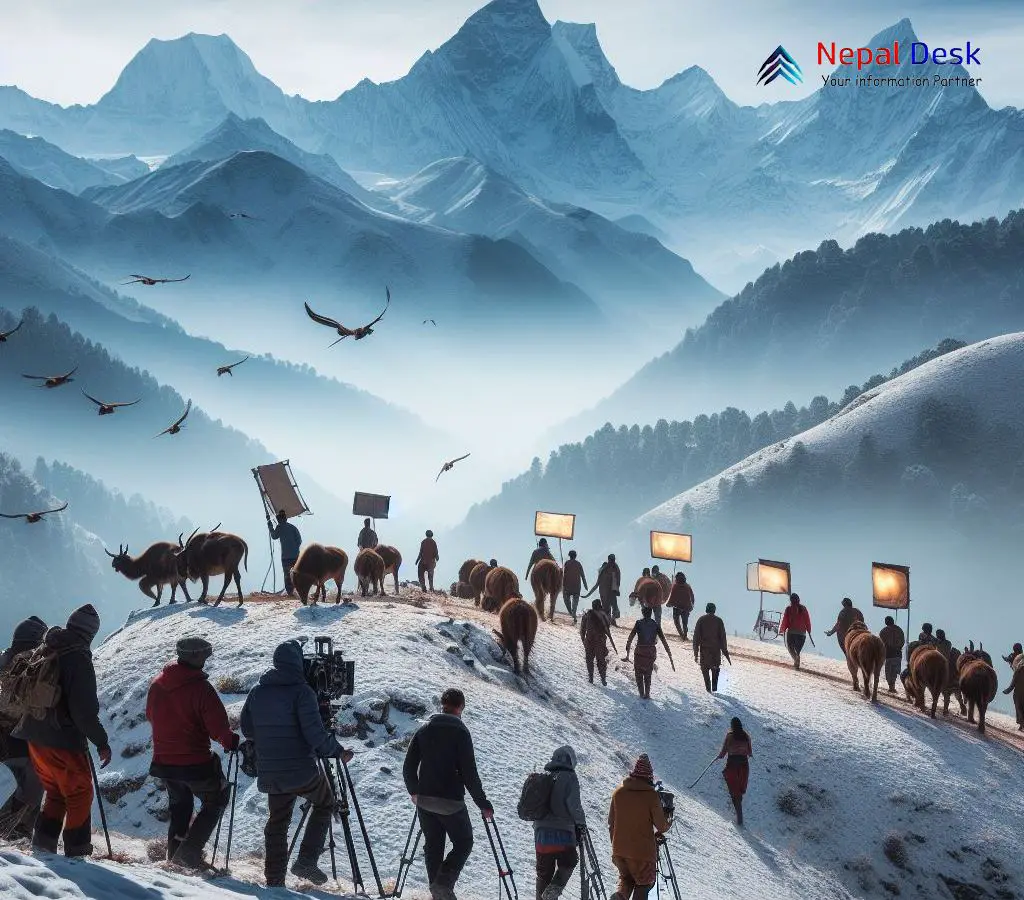Ice Road 2 Movie Transforms Australian Town into Nepalese Village
Published Date

Published Date
Discover the cinematic fusion as Walhalla, Australia, metamorphoses into a Nepalese village for 'Ice Road 2: Road to the Sky.'
⏱ 4 min read
Victorian gold mining town of Walhalla in Australia has been transformed into a Nepalese village set for the Liam Neeson starring Ice Road 2: Road to the Sky movie.
Numerous fans have flocked to the historic town in anticipation of catching a glimpse of renowned Hollywood actor Neeson, as filming commences. In this Netflix film, which serves as a sequel to The Ice Road that premiered in 2021, Neeson's character, Mike McCann, embarks on an adrenaline-fueled journey through the perilous mountains of Nepal.
It is projected to generate around 600 jobs and infuse approximately $30 million into the state's economy while employing Australian cast members, crew, and extras from Victoria's Nepalese community. The filmmakers were awarded funding to film in regional Victoria and the surrounding areas of Melbourne through various incentives such as the federal government's Location Incentive, the Victorian Screen Incentive, and the Regional Location Assistance Fund.
A Nepalese man who had moved to Australia six-and-a-half years ago said that he noticed a casting call for Nepalese extras on Walhalla's Facebook page. He decided to participate as an extra with Nepalese expatriates from Melbourne and the Latrobe Valley.
After arriving at 7 am for filming, the extras were transformed into Kodari community villagers using costumes and makeup before assuming their positions on Walhalla's temporarily resurfaced main street.
Local sites like The Star Hotel, Greyhorse Cafe, dome, and neighboring buildings have been temporarily adorned in vibrant colors for the movie. These exteriors are supplemented with Nepalese signage and props such as bunting. A lively food market and backpacker-style Mt Everest tour buses were added to enhance the set further. Additionally, computer-generated imagery (CGI) detailing and landscape features will be incorporated during post-production. One of the observers noted the meticulous attention to detail, such as props, milk cans, an assortment of colors, and shops saying it is awe-inspiring.
Related:
Also Read:
The production will utilize volume screen virtual technology at NantStudios in Docklands to simulate Nepalese scenery. The movie set has drawn inquisitive spectators from Melbourne, many of whom hail from Nepal. A select few fortunate fans may even have the opportunity to appear in the film.
According to reports, some individuals were unexpectedly asked to serve as extras for a particular scene due to a shortage. The filming process sometimes gets slightly exhausting, as they had to repeatedly perform the same scene of applauding and cheering from various angles. However, the ultimate experience was rewarding. The extras also praised the food provided on set and mentioned that they were offered breakfast, lunch, coffee, tea, hot water, and fruits with no shortage of options.
About Kodari Village:
Kodari village is a very picturesque hamlet nestled in the Himalayan foothills on the Nepal-Tibet border, located at an altitude of 2515-metres. As a significant trade point between the two nations, Kodari is known for its spectacular mountain views and also proximity to the Sino-Nepal Friendship Bridge. The village is a very unique combination of cultural richness and also picturesque beauty, attracting many people who are exploring the border landscape. It is 144 KM away from capital city Kathmandu.
Some Key Aspects about Kodari Village:
- Historic Silk Road: While not formally a link in the Silk Road, Kodari served as a very key junction point for the trade and also cultural interchange between Nepal and China throughout the ages. Traders shipped the spices, salt and fabrics which promoted the economic expansion and trading cultures. It was the starting point for the trans-Himalayan caravan route.
- Contemporary Trade Gateway: After the development of the Kodari Highway (Araniko Highway) in the 1960s, the Kodari was appointed as an official land trade route between two nations which provided economic exchange and also tourism.
- Tibetan Refugee Crisis: During the 1959 Tibetan revolt, Kodari became a very key gateway for the thousands of Tibetan refugees seeking asylum in Nepal. The village played a very crucial role in providing the temporary shelter and also supporting their progress.
- Nepal-China Relations: As time passes, Kodari has emerged as a leading point of diplomatic contact and interaction between Nepal and also China. The place has seen many political visits and negotiations that have formed the bilateral relations.
